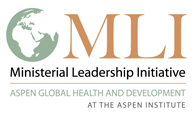- Balanced Scorecard (0)
- country leadership (1)
- country ownership (1)
- Donor Harmonization (6)
- donors (0)
- Dr. Salif Samake (1)
- Dr. Samuel Kargbo (0)
- Ethiopia (8)
- free health care initiative (0)
- global health (1)
- global health policy (1)
- Health Financing (2)
- Leadership for Global Health (7)
- Mali (8)
- mutuelles (1)
- negotiations (0)
- Nepal (10)
- Rwanda (1)
- Senegal (5)
- Sierra Leone (12)
- Women's Health (6)
Achieving the health MDGs: country ownership in four steps
This week (Sept 20–22), world leaders gathered in New York, NY, USA, to give a final push to accelerate progress towards the Millennium Development Goals (MDGs) to which they committed in 2000. Although some progress has been made, a new approach is sorely needed if countries are to achieve MDG targets by 2015.
There has been much debate in the global health community on how best to accelerate positive health outcomes. The notion of country ownership has surfaced in many of these conversations. Country ownership is the surest way for developing countries to chart their own course of development and overcome the challenges they face in building effective and productive states. But what exactly do we mean by country ownership? Drawing on our experiences in Ethiopia, I can point to four key steps for making country ownership a reality.
The first step is planning. Countries must start with a clear development vision, but they also need to elaborate a detailed roadmap for realising it. In Ethiopia, our vision is to become a middle-income country over the next 10–15 years, and our government has clearly articulated strategies for how to get there. For country ownership to be realised, development partners must llow countries the space to identify their own needs and priorities, and develop their own plans as they see fit. But countries should also be open to ideas and seek to tailor proven practices to their particular circumstances. Once a well-considered national plan is in place, however, partners need to support that plan if country ownership is to thrive. We remained open to ideas throughout the planning process. We invited partners’ contributions and benchmarked best practices from other countries. This is the most decisive step towards real ownership.
The second step is resourcing the plan. Here too, countries must take the lead. And because resources are limited, careful prioritisation is crucial. In crafting our health plan, we defined two alternative versions. If resource constraints mean that we cannot implement our broader and more ambitious plan, we go with our contingency plan, which focuses on the most pressing priorities. Even more important is the way in which resources are channeled. Flexible and predictable funding fosters accountability and ownership by allowing countries greater leverage in responsibly managing resources. Direct budget support is the ideal mechanism, in view of the enhanced flexibility and control it affords countries. In cases where our partners’ chosen mechanism is not budgetary support, we have negotiated ways in which the funding can be used to benefit the whole health system. We have even used vertically raised funds—ie, those earmarked for disease-specific services—to strengthen our health system. For example, about 25–30% of HIV/AIDS grants from the Global Fund to Fight AIDS, Tuberculosis and Malaria and 15% of resources from the US President’s Emergency Plan for AIDS Relief have been used to build system capacities in many areas, including an information system for health management, a supply-chain management system, and major improvements in human resources.
The third step is implementation, in which countries must also be fully engaged. Some have argued that countries lack the capacity to implement. If so, the most efficient and sustainable solution is for partners to strengthen existing capacities within the country rather than replacing them with parallel structures. If existing national systems and procedures are inadequate, partners should work with countries to fix them.
The fourth step is monitoring and evaluation. Partners should also help countries to build their capacities to track performance. Mutual accountability between countries and partners requires a solid results-based framework, premised on clear outcome targets that must be defined and agreed at the outset.
Categories
Archive Search
MLI works with ministries of health to advance country ownership and leadership. This blog covers issues affecting the ministries and the people they serve.
Recent Comments
Tag Cloud
Blogs We Like
- Save the Children
- Africa Can End Poverty
- Africa Governance Initiative
- Global Health
- Center for Global Health R&D Policy Assessment
- Center for Health Market Innovations
- Transparency and Accountability Program
Contact Us
Please direct all inquiries to
Connect with Us
Find us on ![]()

Post new comment